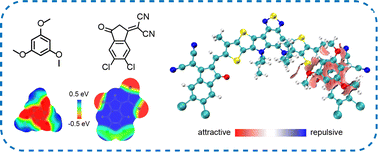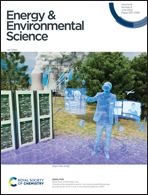Restrained energetic disorder for high-efficiency organic solar cells via a solid additive†
Abstract
Energetic disorder is one of the major impediments that limits the performance of organic solar cells (OSCs). Nevertheless, achieving a favorable nanoscale morphology that restricts the density of states proves to be challenging, especially in the state-of-the-art non-fullerene acceptors (NFAs) systems. Here, we incorporate 1,3,5-trimethoxybenzene (TMB) as a solid additive to restrict the energetic disorder and achieve outstanding efficiencies of OSCs. The results suggest that TMB possesses intense electrostatic interaction with the terminal groups of NFAs to facilitate direct face-to-face packing. During the film formation, TMB works as a bridge to connect adjacent NFAs, and a controlled π–π stacking distance can be obtained after its subsequent volatilization. The optimized morphology limits energetics disorder, which further enhances exciton delocalization and inhibits non-radiative energy loss. Consequently, TMB-incorporated binary devices based on PBDB-TF:eC9 and ternary devices based on PBDB-TF:eC9:HDO-4Cl record high efficiencies of 18.61% and 19.30%, respectively. This work provides new insights into morphology optimization and offers inspiration for new approaches to improve OSC performance.



 Please wait while we load your content...
Please wait while we load your content...